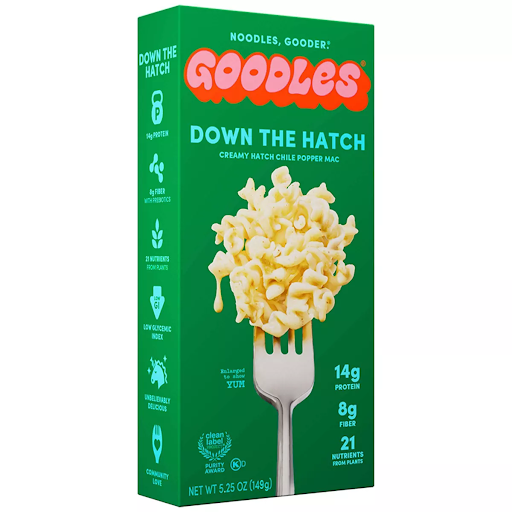Goodles
If Gooder Foods has developed an innovation with scale potential, it will have to grow the category known as “dried dinner mixes” in a way that no one, not even Annie’s, has ever managed to achieve. Taking on Kraft-Heinz (or Annie’s) directly would be difficult and very expensive.
However, it is unlikely to yield growth faster than Annie’s achieved for most of its independent life as a private company (~20 – 30% year-over-year). Poking the Fortune 500 bear might inspire Kraft-Heinz to launch a new brand to compete head-on with Goodles. After all, dried mac and cheese is a core manufacturing capability of Kraft-Heinz, and they can obtain much lower pricing on every single ingredient Goodles uses. This cost advantage would allow them to quickly undercut Gooder Foods’ shelf pricing. And Kraft-Heinz can act faster now that the pandemic surge in CPG volumes has abated—much quicker than any co-manufacturer ecosystems Gooder Foods has assembled.
But what is Goodles selling?
And does it fit the pattern of dozens of prior brands (e.g., Chobani, SkinnyPop, and others) that have pulled off the seemingly impossible to carve out new segments in mature center-store categories?
Let’s take a look.
Goodles is a creatively flavored adult-oriented mac-and-cheese product line featuring the balanced nutrition of your average dinner plate (fiber, protein, dairy, carbs, and veggies).
But flavor is the most prominent design feature—smoked Cheddar. Truffle powder. Gouda. This is urban restaurant flavoring, not Sesame Street fare. In a head-to-head comparison with Kraft Blue Box, the inventor of this category, Goodles’ most remarkable attributes are the high fiber content and the gynocentric multi-vitamin nutrition derived from powderizing green veggies and burying them inside the pasta. The pasta avoids the problem of pure lentil, pure chickpea, or lentil/chickpea blended pasta by giving up on any gluten-free pretense. Goodles’ wheat/chickpea blend allows the company to offer an excellent chewy mac with high fiber.
How much fiber?
Read the answer and the rest of my thoughts from my recent piece published by the Food Institute.
